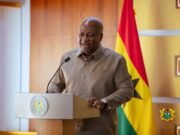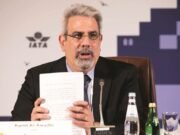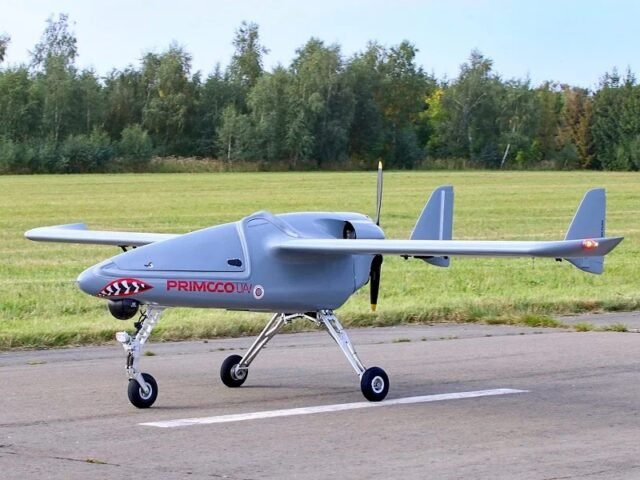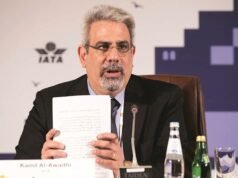Primoco One 150M Is Certified ! By JUDr. Jakub Fojtík, Ph.D., LL.M | On 11 March 2025, Primoco UAV SE received the military type certificate for its Primoco UAV One 150M. According to a bulletin from the Department of Oversight of Military Aviation, it is only the third military aircraft to achieve military certification in the Czech Republic, following the L-159 and L-39NG. Notably, it is also the world’s first unmanned aircraft to be certified in accordance with STANAG 4703.
This year marks ten remarkable years for Primoco UAV SE. Our initial years focused on the development of the Primoco One 100 and One 150 UAVs, with the One 150 evolving as our sole flagship product. The prototype, designed to validate the aerodynamic concept through extensive modelling procedures, took its inaugural flight on July 31, 2015, at Tchořovice Airport. The second prototype set the standard for future production, flying in 2016 equipped with an autopilot and fully composite construction. Over the next two years, we produced additional UAVs to refine our autopilot flight model. Series production commenced in 2017 following rigorous testing, leading to the successful launch of the first One 150 aircraft, complete with an electro-optical observation system, delivered to our first customer that same year. Primoco UAV’s ambition has propelled the company onto the Prague Stock Exchange, where we quickly established ourselves as a standout success. However, the absence of an unmanned operations airport posed challenges to our growth. In 2019, we acquired the Písek – Krašovice airport, once operated by the Czech Army, and undertook significant renovations to restore it to operational status. By 2020, our aircraft design had reached a level of maturity that prompted us to pursue dual certification for both civil and military operations.
Path to Military Certification
A crucial requirement for military certification is receiving approval as a Design Organization (DOA) and Production Organization (POA). In September 2020, we submitted our application for a type certificate, initiating the administrative process, contingent on securing these key authorizations. We successfully obtained our DOA and POA certifications in October 2021, demonstrating the necessary capabilities and documentation, placing us among only four Czech organizations authorized to develop aeronautical equipment. With our DOA certification secured, we commenced the military type certification process, which included both company-directed compliance verification and independent evaluations by Compliance Verification Engineers (CVE) in collaboration with the Czech Republic’s Military Aviation Oversight Division (ODVL). Our regulatory framework is based on NATO STANAG 4703 (AEP-83B), which received ODVL’s validation. Due to challenges encountered during our initial partnership with the state-run Military Technical Institute, we sought alternative independent CVEs, leading to a successful collaboration with Wingit Works Ltd., EGMedical Ltd., and other professionals. Wingit Works specializes in comprehensive design, computational, simulation, and analytical services for both manned and unmanned aviation, drawing from a rich history that includes contributions to the L-39NG and L-410 NG projects. Their specialists focused on airframe design and flight performance. In tandem, experts from EGMedical, known for their stringent compliance standards in medical technology, evaluated our aircraft’s ground control station and communication systems.
The focus of the company’s activities lies in strength and aerodynamic calculations, conceptual designs, structural, weight and material optimization of aircraft assemblies, reliability analyses and, last but not least, the development of software tools that make existing computational methods more efficient. The CVEs for the Primoco UAV project were Ing. Ondřej Zvěřina for airframe design and flight performance and properties, Ing. Matěj Mžourek for electronic on-board equipment and Ing. Vojtěch Malý for system security. The second company is primarily engaged in the development of electronic devices for medical technology, which uses much stricter standards and tolerances than in aviation with regard to the protection of human health. The company focused on verification of compliance of the aircraft ground control station including the communication system. Ing. Jan Žurek was the main CVE. The engine compliance was the responsibility of the expert from the practice of Ing. Jindřich Kocáb, co-author of the current textbook Aircraft Engines. In addition to CVE, the company co-operated closely with the Institute of Aircraft Technology of the Czech Technical University, whose then director Ing. Robert Theiner, Ph.D. enabled the expert and testing activities of the Institute’s specialists. Subsequently, the co-operation with the Czech Telecommunications Office was covered by Ing. Milan Dvořák, Ph.D. On behalf of Primoco UAV SE, the design and certification was carried out by practically all non-production employees of the company and also by Assoc. Ing. Pavel Pačes, Ph.D. from the Czech Technical University, who expanded the company’s team of design engineers as part of the project. Process setup and initial project management was the responsibility of Ing. Vladan Ševčík and then Ing. Jiří Pavlas, Ph.D., and in the phase of the commencement of the examinations, the proceedings were taken over by JUDr. Jakub Fojtík, Ph.D., LL.M., who brought the project to certification.
Challenging Tests
Out of the 255 test areas defined by STANAG 4703, only 197 were applicable to the Primoco UAV, as the remaining requirements related to aircraft types such as electrically powered, multi-engine, or those with variable-pitch propellers. As of February 2025, the company had submitted documentation to ODVL confirming the completion of all applicable tests. These included:
• Full structural strength tests
• Complete operational reliability tests of the propulsion unit and propeller
• Extensive system and operational safety assessments, including FMEA (Failure Modes and Effects Analysis) and FTA (Fault Tree Analysis)
Many tests employed multiple methods of verification, ranging from documentation review and lab/bench testing to ground and flight trials conducted on final prototypes. Structural strength was verified using three non-flying prototypes at the test facilities of the Institute of Aircraft Technology. From October 2023 to November 2024, after completing analytical and preparatory phases, the team performed exhaustive tests on the fuselage, wing-fuselage junctions, tail surfaces, and landing gear, with participation from CVEs and ODVL. Due to the general nature of military regulations, the EASA CS-VLA standard (used for light aircraft) was adopted as the basis for the strength testing. The demanding nature of these tests was evident, particularly during the major break test of the complete airframe, where a maximum force of 11,686 N was applied. Under load, the mobility of control surfaces was verified. Although the structure experienced deformation, it remained far within safe limits for aerodynamic stability and controllability—and crucially, it withstood the load without failure.
The test design, execution, documentation, and evaluation were led by:
• Ing. Karel Barák
• Ing. Jiří Brabec, Ph.D.
• Ing. Tomáš Čenský, Ph.D.
• Ing. Tomáš Kostroun
• Ing. Jaromír Kučera
• Bc. Ondřej Plajdička
• Ing. Jakub Valenta
Ing. Aleš Kratochvíl, Ph.D. from the Czech Telecommunications Office (CTO) processed and evaluated the ground and flight tests assessing the dynamic response of the airframe. Each test was recorded using multiple cameras, and all measurement datasets were archived for later analysis. In parallel, the engine underwent rigorous testing on a custom-built manufacturer’s test stand, with multiple data logging systems in place. The engine completed a 50-hour endurance test, after which it was disassembled for a detailed inspection of individual component wear and condition.
Culmination of Testing: Ground and Flight Verification
The final phase of the certification process consisted of extensive ground and flight verifications. Radek Suk and Vojtěch Novotný—the first certified Czech military UAV pilots outside the Czech Army—were approved by the company for security clearance and subsequently awarded the Executive Military Aviator Certificate. The initial prototype, serial number 001, was designated for flight and ground testing and assigned registration number 0498. It became the first military unmanned aerial vehicle to be entered into the Military Aircraft Register of the Czech Republic not operated by the Czech Army. The aircraft’s first flight took place in October 2021. However, as testing advanced—especially in structural strength analysis—certain design updates became necessary. As a result, the prototype was grounded and deregistered, since further tests using it would no longer yield valid results. In August 2024, a second prototype (serial number 003) was introduced and assigned registration number 0530. Between October 2021 and November 2024, a total of 113 test flights were carried out, all at the company’s private airfield in Krašovice. Test flights were executed by pilot-operators Vojtěch Novotný and Radek Suk, with technical support from mechanics František Maršík, Václav Nekolný, and Ondřej Stránský.
Additional contributions included:
• Ing. Jakub Toman and Lukáš Svoboda, who worked on test documentation preparation
• Josef Šťastný, Production Director, who supported prototype construction and testing
• Mgr. Lenka Holsteinová, Vice President of Compliance, who oversaw output processing and data analysis
Despite the fact that some tests explored extreme conditions—including controllability at flight envelope limits, in-flight engine restarts, glide performance, and even deliberate datalink disconnection—not a single incident occurred throughout flight operations. Additionally, the company performed sixty further check and preparatory flights using civil aircraft as part of its internal verification efforts.
Even More Challenging Evaluation
The full certification process resulted in:
• Over 500 hours of video recordings
• 28,000 pages of documentation
• 123 GB of data collected
For example, during the major structural strength tests, deformation measurements were taken at seven locations during loading. Post-test permanent deformations were verified by levelling at eleven locations.
In detail:
• Relative deformations were measured using strain gauges at:
• 14 locations during wing and fuselage testing
• 10 locations during tailplane testing
• During the wing and fuselage test, 35 channels of data were recorded, including from strain gauges, force sensors, and position sensors
Each flight test involved the monitoring of over 180 parameters, all of which were stored for subsequent evaluation. Before and after each flight, the aircraft was weighed, levelled, and verified across the full range of weight and centre of gravity conditions.
Test programme and methodology
For each individual test and method of certification, a test programme and methodology was developed, followed by a protocol, which often referred to a calculation report or flight test analysis of hundreds of pages. In total, nearly two hundred individual test methodologies and an equal number of test reports were produced. The evaluation of flight data was carried out in the Czech Republic, but also by manufacturers of on-board equipment in Spain and Norway, and foreign partners also participated in the evaluation and certification. A huge advantage was the use of an autopilot approved to Mil-Std-810G standards and a datalink approved as part of the STC supplemental type certificate by EASA. In parallel with the test flights, the operational documentation was modified to include the requirements of the regulatory base measured and verified during flight operations. The complete flight tests were carried out by the company’s pilots “on the fly” when the operation at the airport in Písek was organized in two shifts focused on tests and parallel training of customer crews and flights of newly produced aircraft. As a result of the intense traffic and the need to incorporate crews for the demanding certification program, some of the company’s pilots flew nearly 900 missions in 2024, more than 40 times the average flights of active military UAV pilots.
Following the evaluation of all examinations, the final statements for each examination and subsequently the final reports for each panel were submitted to ODVL in late February 2025. The certification result is a Type Certificate for special purposes. It was issued by the Military Aviation Oversight Division on 11 March 2025 and is the third military aircraft certification in the Czech Republic after the L-159/159A and L-39NG. Primoco UAV SE is the second aerospace manufacturer to achieve type certification of its product in the Czech Republic. In total, the certification took five years and involved over sixty people in varying degrees. The designation for special purposes is enforced by some pending tests, for example in the area of material samples, where over 200 samples of individual building materials are being assessed in the climate chamber. Primoco UAV SE is therefore now working to complete the remaining tests, which have already been demonstrated in an alternative manner using the operational experience of thousands of flight hours of One 150 aircraft. The company aims to remove all restrictions by the end of 2025.
Beyond the Army
Certification according to STANAG 4703 is not the only achievement of the company. In February 2025, the company became the first in the world to receive a revised version of the LUC approval from the Czech Civil Aviation Authority under the brand-new SORA 2.5 standard. This approval allows the aircraft to operate over populated areas and in non-segregated airspace while complying with defined rules. The term “populated area” in the scope of the authorization is limited to areas with a density of up to 5,000 persons per km², which is, for illustration, twice the average population density of the capital city of Prague. This authorization was only achievable due to several years of operational experience involving rigorous risk assessment and operational safety monitoring, as well as the ability to utilize military certification outputs to meet EASA requirements. Following the new authorization, the company performed its first flights in February this year. A factory aircraft equipped with a BTS mobile transmitter was deployed to address capacity and signal insufficiency issues in the terrestrial mobile network for T-Mobile during the Jizerská 50 cross-country skiing competition. At the beginning of March, the aircraft became the star of the Mobile World Congress exhibition in Barcelona, where it was showcased by the parent organization, Deutsche Telekom. The first deployment of the “flying BTS” could have occurred during the floods in Moravia in September of the previous year, for which the company quickly prepared crews and equipment in conjunction with the operator. According to the SORA 2.5 standard, the first training course for a foreign customer was also completed in March this year. Additionally, in March, the company successfully completed an audit for the International Organization of Oil and Gas Producers (IOGP) 696 standard. As a result, the Primoco One 150 became the first aircraft in the world to be approved under this new and extremely demanding standard, making it deployable within oil, gas and mining companies globally.
Conclusion
Primoco UAV SE stands at the forefront of the unmanned aerial vehicle industry, proudly recognized as the only company worldwide compliant with the International Harmonized Standard for Military Aviation EMAR 21. With a prestigious type certificate for its proprietary aircraft and operational authorizations under the LUC and IOGP 696 standards, Primoco UAV is redefining the standards for excellence in the field. The Primoco UAV Model One 150M is not only the world’s first UAV to achieve certification to STANAG 4703, but it also represents our commitment to innovation and quality. As demand for Primoco UAVs soars, we are actively negotiating deliveries to several European nations, ready to tackle complex and high-stakes missions. Remarkably, all our milestones have been achieved without any state support, grants, or loans, emphasizing our position as a uniquely independent player in the market. Our production extends beyond the borders of the Czech Republic, as we collaborate on cutting-edge development projects with global partners like Airbus DS, focusing on the complete verification of autonomous flight capabilities powered by advanced AI modules. Looking ahead, we are poised to begin design verification under EASA regulations this year, with the ambition of becoming the first UAV to secure such a prestigious license. At the same time, we are developing our state-of-the-art facility at the Krašovice airport—a testament to our dedication to innovation and growth.Primoco One 150M Is Certified!
By JUDr. Jakub Fojtík, Ph.D., LL.M.
On 11 March 2025, Primoco UAV SE received the military type certificate for its Primoco UAV One 150M. According to a bulletin from the Department of Oversight of Military Aviation, it is only the third military aircraft to achieve military certification in the Czech Republic, following the L-159 and L-39NG. Notably, it is also the world’s first unmanned aircraft to be certified in accordance with STANAG 4703.
This year marks ten remarkable years for Primoco UAV SE. Our initial years focused on the development of the Primoco One 100 and One 150 UAVs, with the One 150 evolving as our sole flagship product. The prototype, designed to validate the aerodynamic concept through extensive modelling procedures, took its inaugural flight on July 31, 2015, at Tchořovice Airport. The second prototype set the standard for future production, flying in 2016 equipped with an autopilot and fully composite construction. Over the next two years, we produced additional UAVs to refine our autopilot flight model. Series production commenced in 2017 following rigorous testing, leading to the successful launch of the first One 150 aircraft, complete with an electro-optical observation system, delivered to our first customer that same year. Primoco UAV’s ambition has propelled the company onto the Prague Stock Exchange, where we quickly established ourselves as a standout success. However, the absence of an unmanned operations airport posed challenges to our growth. In 2019, we acquired the Písek – Krašovice airport, once operated by the Czech Army, and undertook significant renovations to restore it to operational status. By 2020, our aircraft design had reached a level of maturity that prompted us to pursue dual certification for both civil and military operations.
Path to Military Certification
A crucial requirement for military certification is receiving approval as a Design Organization (DOA) and Production Organization (POA). In September 2020, we submitted our application for a type certificate, initiating the administrative process, contingent on securing these key authorizations. We successfully obtained our DOA and POA certifications in October 2021, demonstrating the necessary capabilities and documentation, placing us among only four Czech organizations authorized to develop aeronautical equipment. With our DOA certification secured, we commenced the military type certification process, which included both company-directed compliance verification and independent evaluations by Compliance Verification Engineers (CVE) in collaboration with the Czech Republic’s Military Aviation Oversight Division (ODVL). Our regulatory framework is based on NATO STANAG 4703 (AEP-83B), which received ODVL’s validation. Due to challenges encountered during our initial partnership with the state-run Military Technical Institute, we sought alternative independent CVEs, leading to a successful collaboration with Wingit Works Ltd., EGMedical Ltd., and other professionals. Wingit Works specializes in comprehensive design, computational, simulation, and analytical services for both manned and unmanned aviation, drawing from a rich history that includes contributions to the L-39NG and L-410 NG projects. Their specialists focused on airframe design and flight performance. In tandem, experts from EGMedical, known for their stringent compliance standards in medical technology, evaluated our aircraft’s ground control station and communication systems.
The focus of the company’s activities lies in strength and aerodynamic calculations, conceptual designs, structural, weight and material optimization of aircraft assemblies, reliability analyses and, last but not least, the development of software tools that make existing computational methods more efficient. The CVEs for the Primoco UAV project were Ing. Ondřej Zvěřina for airframe design and flight performance and properties, Ing. Matěj Mžourek for electronic on-board equipment and Ing. Vojtěch Malý for system security. The second company is primarily engaged in the development of electronic devices for medical technology, which uses much stricter standards and tolerances than in aviation with regard to the protection of human health. The company focused on verification of compliance of the aircraft ground control station including the communication system. Ing. Jan Žurek was the main CVE. The engine compliance was the responsibility of the expert from the practice of Ing. Jindřich Kocáb, co-author of the current textbook Aircraft Engines. In addition to CVE, the company co-operated closely with the Institute of Aircraft Technology of the Czech Technical University, whose then director Ing. Robert Theiner, Ph.D. enabled the expert and testing activities of the Institute’s specialists. Subsequently, the co-operation with the Czech Telecommunications Office was covered by Ing. Milan Dvořák, Ph.D. On behalf of Primoco UAV SE, the design and certification was carried out by practically all non-production employees of the company and also by Assoc. Ing. Pavel Pačes, Ph.D. from the Czech Technical University, who expanded the company’s team of design engineers as part of the project. Process setup and initial project management was the responsibility of Ing. Vladan Ševčík and then Ing. Jiří Pavlas, Ph.D., and in the phase of the commencement of the examinations, the proceedings were taken over by JUDr. Jakub Fojtík, Ph.D., LL.M., who brought the project to certification.
Challenging Tests
Out of the 255 test areas defined by STANAG 4703, only 197 were applicable to the Primoco UAV, as the remaining requirements related to aircraft types such as electrically powered, multi-engine, or those with variable-pitch propellers. As of February 2025, the company had submitted documentation to ODVL confirming the completion of all applicable tests. These included:
• Full structural strength tests
• Complete operational reliability tests of the propulsion unit and propeller
• Extensive system and operational safety assessments, including FMEA (Failure Modes and Effects Analysis) and FTA (Fault Tree Analysis)
Many tests employed multiple methods of verification, ranging from documentation review and lab/bench testing to ground and flight trials conducted on final prototypes. Structural strength was verified using three non-flying prototypes at the test facilities of the Institute of Aircraft Technology. From October 2023 to November 2024, after completing analytical and preparatory phases, the team performed exhaustive tests on the fuselage, wing-fuselage junctions, tail surfaces, and landing gear, with participation from CVEs and ODVL. Due to the general nature of military regulations, the EASA CS-VLA standard (used for light aircraft) was adopted as the basis for the strength testing. The demanding nature of these tests was evident, particularly during the major break test of the complete airframe, where a maximum force of 11,686 N was applied. Under load, the mobility of control surfaces was verified. Although the structure experienced deformation, it remained far within safe limits for aerodynamic stability and controllability—and crucially, it withstood the load without failure.
The test design, execution, documentation, and evaluation were led by:
• Ing. Karel Barák
• Ing. Jiří Brabec, Ph.D.
• Ing. Tomáš Čenský, Ph.D.
• Ing. Tomáš Kostroun
• Ing. Jaromír Kučera
• Bc. Ondřej Plajdička
• Ing. Jakub Valenta
Ing. Aleš Kratochvíl, Ph.D. from the Czech Telecommunications Office (CTO) processed and evaluated the ground and flight tests assessing the dynamic response of the airframe. Each test was recorded using multiple cameras, and all measurement datasets were archived for later analysis. In parallel, the engine underwent rigorous testing on a custom-built manufacturer’s test stand, with multiple data logging systems in place. The engine completed a 50-hour endurance test, after which it was disassembled for a detailed inspection of individual component wear and condition.
Culmination of Testing: Ground and Flight Verification
The final phase of the certification process consisted of extensive ground and flight verifications. Radek Suk and Vojtěch Novotný—the first certified Czech military UAV pilots outside the Czech Army—were approved by the company for security clearance and subsequently awarded the Executive Military Aviator Certificate. The initial prototype, serial number 001, was designated for flight and ground testing and assigned registration number 0498. It became the first military unmanned aerial vehicle to be entered into the Military Aircraft Register of the Czech Republic not operated by the Czech Army. The aircraft’s first flight took place in October 2021. However, as testing advanced—especially in structural strength analysis—certain design updates became necessary. As a result, the prototype was grounded and deregistered, since further tests using it would no longer yield valid results. In August 2024, a second prototype (serial number 003) was introduced and assigned registration number 0530. Between October 2021 and November 2024, a total of 113 test flights were carried out, all at the company’s private airfield in Krašovice. Test flights were executed by pilot-operators Vojtěch Novotný and Radek Suk, with technical support from mechanics František Maršík, Václav Nekolný, and Ondřej Stránský.
Additional contributions included:
• Ing. Jakub Toman and Lukáš Svoboda, who worked on test documentation preparation
• Josef Šťastný, Production Director, who supported prototype construction and testing
• Mgr. Lenka Holsteinová, Vice President of Compliance, who oversaw output processing and data analysis
Despite the fact that some tests explored extreme conditions—including controllability at flight envelope limits, in-flight engine restarts, glide performance, and even deliberate datalink disconnection—not a single incident occurred throughout flight operations. Additionally, the company performed sixty further check and preparatory flights using civil aircraft as part of its internal verification efforts.
Even More Challenging Evaluation
The full certification process resulted in:
• Over 500 hours of video recordings
• 28,000 pages of documentation
• 123 GB of data collected
For example, during the major structural strength tests, deformation measurements were taken at seven locations during loading. Post-test permanent deformations were verified by levelling at eleven locations.
In detail:
• Relative deformations were measured using strain gauges at:
• 14 locations during wing and fuselage testing
• 10 locations during tailplane testing
• During the wing and fuselage test, 35 channels of data were recorded, including from strain gauges, force sensors, and position sensors
Each flight test involved the monitoring of over 180 parameters, all of which were stored for subsequent evaluation. Before and after each flight, the aircraft was weighed, levelled, and verified across the full range of weight and centre of gravity conditions.
Test programme and methodology
For each individual test and method of certification, a test programme and methodology was developed, followed by a protocol, which often referred to a calculation report or flight test analysis of hundreds of pages. In total, nearly two hundred individual test methodologies and an equal number of test reports were produced. The evaluation of flight data was carried out in the Czech Republic, but also by manufacturers of on-board equipment in Spain and Norway, and foreign partners also participated in the evaluation and certification. A huge advantage was the use of an autopilot approved to Mil-Std-810G standards and a datalink approved as part of the STC supplemental type certificate by EASA. In parallel with the test flights, the operational documentation was modified to include the requirements of the regulatory base measured and verified during flight operations. The complete flight tests were carried out by the company’s pilots “on the fly” when the operation at the airport in Písek was organized in two shifts focused on tests and parallel training of customer crews and flights of newly produced aircraft. As a result of the intense traffic and the need to incorporate crews for the demanding certification program, some of the company’s pilots flew nearly 900 missions in 2024, more than 40 times the average flights of active military UAV pilots.
Following the evaluation of all examinations, the final statements for each examination and subsequently the final reports for each panel were submitted to ODVL in late February 2025. The certification result is a Type Certificate for special purposes. It was issued by the Military Aviation Oversight Division on 11 March 2025 and is the third military aircraft certification in the Czech Republic after the L-159/159A and L-39NG. Primoco UAV SE is the second aerospace manufacturer to achieve type certification of its product in the Czech Republic. In total, the certification took five years and involved over sixty people in varying degrees. The designation for special purposes is enforced by some pending tests, for example in the area of material samples, where over 200 samples of individual building materials are being assessed in the climate chamber. Primoco UAV SE is therefore now working to complete the remaining tests, which have already been demonstrated in an alternative manner using the operational experience of thousands of flight hours of One 150 aircraft. The company aims to remove all restrictions by the end of 2025.
Beyond the Army
Certification according to STANAG 4703 is not the only achievement of the company. In February 2025, the company became the first in the world to receive a revised version of the LUC approval from the Czech Civil Aviation Authority under the brand-new SORA 2.5 standard. This approval allows the aircraft to operate over populated areas and in non-segregated airspace while complying with defined rules. The term “populated area” in the scope of the authorization is limited to areas with a density of up to 5,000 persons per km², which is, for illustration, twice the average population density of the capital city of Prague. This authorization was only achievable due to several years of operational experience involving rigorous risk assessment and operational safety monitoring, as well as the ability to utilize military certification outputs to meet EASA requirements. Following the new authorization, the company performed its first flights in February this year. A factory aircraft equipped with a BTS mobile transmitter was deployed to address capacity and signal insufficiency issues in the terrestrial mobile network for T-Mobile during the Jizerská 50 cross-country skiing competition. At the beginning of March, the aircraft became the star of the Mobile World Congress exhibition in Barcelona, where it was showcased by the parent organization, Deutsche Telekom. The first deployment of the “flying BTS” could have occurred during the floods in Moravia in September of the previous year, for which the company quickly prepared crews and equipment in conjunction with the operator. According to the SORA 2.5 standard, the first training course for a foreign customer was also completed in March this year. Additionally, in March, the company successfully completed an audit for the International Organization of Oil and Gas Producers (IOGP) 696 standard. As a result, the Primoco One 150 became the first aircraft in the world to be approved under this new and extremely demanding standard, making it deployable within oil, gas and mining companies globally.
Conclusion
Primoco UAV SE stands at the forefront of the unmanned aerial vehicle industry, proudly recognized as the only company worldwide compliant with the International Harmonized Standard for Military Aviation EMAR 21. With a prestigious type certificate for its proprietary aircraft and operational authorizations under the LUC and IOGP 696 standards, Primoco UAV is redefining the standards for excellence in the field. The Primoco UAV Model One 150M is not only the world’s first UAV to achieve certification to STANAG 4703, but it also represents our commitment to innovation and quality. As demand for Primoco UAVs soars, we are actively negotiating deliveries to several European nations, ready to tackle complex and high-stakes missions. Remarkably, all our milestones have been achieved without any state support, grants, or loans, emphasizing our position as a uniquely independent player in the market. Our production extends beyond the borders of the Czech Republic, as we collaborate on cutting-edge development projects with global partners like Airbus DS, focusing on the complete verification of autonomous flight capabilities powered by advanced AI modules. Looking ahead, we are poised to begin design verification under EASA regulations this year, with the ambition of becoming the first UAV to secure such a prestigious license. At the same time, we are developing our state-of-the-art facility at the Krašovice airport—a testament to our dedication to innovation and growth.
Primoco One 150M Is Certified ! Source: JUDr. Jakub Fojtík, Ph.D., LL.M | AviationGhana




























